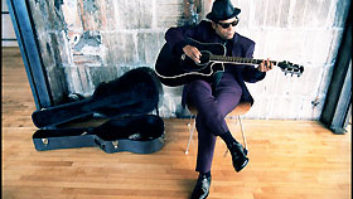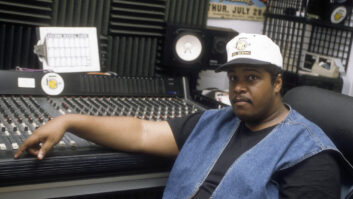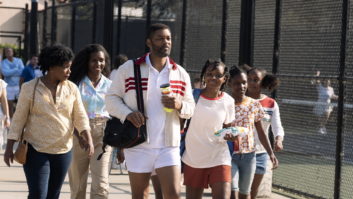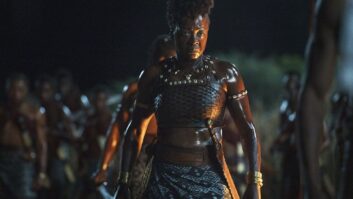
Garland Jeffreys
Photo: Danny Clinch
From the 1970s into the ’90s, Brooklyn-based singer/songwriter Garland Jeffreys created a prolific body of recorded work that was intensely personal, as well as stylistically and thematically varied. Much of it was socially conscious—chronicling, poeticizing, commenting on, and laying bare harsh realities and societal dysfunction in New York City and beyond. However, after releasing Wildlife Dictionary in 1997 on RCA/BMG, Jeffreys ceased recording new material and spent time with his family until 2010, when he returned to the studio to produce the rock- and blues-oriented The King of In Between (Luna Park Records, 2011), his first album of entirely new work in 14 years.
Jeffreys co-produced his new project with guitarist Larry Campbell (Bob Dylan, Levon Helm) and brought in Steve Jordan (drums), Mike Merritt (bass), Duke Levine (guitar) and Brian Mitchell (keyboards). The King of In Between also includes guest artists Lou Reed, Duncan Sheik, and Jeffreys’ 14-year-old daughter, Savannah.

“This is purely an effort of new songs over a period of a few years,” Jeffreys says. “It is very much a process. You’re trying to write good songs that really represent your thinking: your discoveries in advance of the album and while you’re making the album, and what you’re hoping for in the end. And in this particular album, I completely satisfied myself. I’ve gone down every alley, I’ve walked down every street, and this is what I’ve come up with.”
Jeffreys and company recorded basic tracks at Brooklyn Recording with engineer Ben Liscio on a custom 52-channel Neve 8088 modified by Fred Hill, which combines two Neve 8058 consoles. “I was very impressed when I came to look at the studio,” Jeffreys says. “The console was very attractive. I love the Neve sound and I’m always looking for a Neve board.” Overdubs took place in a Manhattan studio, One East Recording (featuring a 24-input Neve 5316 console), with engineer Yohei Goto. “I found another Neve room close by my place in the city,” Jeffreys adds. “I’m very happy with the way the basic recordings sounded.”
For mixing, Jeffreys turned to longtime friend and collaborator Roy Cicala, the former chief engineer of The Record Plant in Manhattan, whose credits include John Lennon, Aretha Franklin, Van Morrison, and Bruce Springsteen among many others, and whom Jeffreys has known since 1972. Cicala fully understands Jeffreys’ sound and intentions, having mixed Jeffreys’ self-titled debut solo album as well as Jeffreys’ singles “Wild In The Streets” (1973) and “Matador” (1979). “I wanted him to mix this album,” Jeffreys says. “This was my first album in a while, and I thought Roy would be perfect for it. The problem is, he was living in Brazil.”

Garland Jeffreys says that he adapted to listening to Roy Cicala’s mixes in his home environment.
Photo: Danny Clinch
Cicala explains his relocation to São Paulo, Brazil: “I have a daughter
living in Brazil and came here to stay for two weeks, and it is now
going on five years,” Cicala explains. “During this time I became a
resident and had to do something, so we started the studio. It’s a
five-room facility called SA Plant. My partner here is Apollo, a
remarkable arranger and keyboard programmer with whom I often
collaborate. The studio is fantastic and we’re very happy, but my
biggest downer is that I miss New York.
“I suggested to Garland, ‘Let’s try to mix it long distance: Send me
your hard drive and let’s give it a go,’” Cicala says; he and Jeffreys
exchanged files and comments via email, and had phone conversations.
“Garland’s CD was mixed on a V3 Neve and transferred to digital. I used
Logic because I love the automation; Pro Tools was used first for rough
mixes. Mixing from digital to old analog equipment, to tape, and back to
digital is a time consuming method but the end result is well worth the
pain.”
“It was very much trial and error,” Jeffreys says of the mixing process.
“I’d send him stuff, he’d send me an MP3. Then I’d drop it to CD and
listen to it on my system. I was listening at home with my ProAcs and
NS-10s, and I’ve got to think about what volume [level] I’m listening
at. Between the two sets of speakers, I’d come to a conclusion.
“We went back and forth,” Jeffreys continues. “On ‘Rock and Roll Music,’
I wanted a trashy guitar part, and I would coax him to make it
brighter. Sometimes it was difficult to explain what I was trying to
get, but we worked through it. Once we really got into it, it became
easier to communicate. We developed a language. He just knows about the
way something can sound. He’s worked with fantastic artists over the
years, so he knows what to create, how to create it, how to EQ it. And
he did that with each of my songs.”
“I tried to make it with my sound, and [Jeffreys] constantly rejected
[it], so we met halfway!” Cicala adds. “The new sound was not always up
to par this way, so after we liked the mix, I would send [Jeffreys] a
WAV file.”
Jeffreys says that he eventually learned to perceive and interpret
Cicala’s mixes accurately, while working within the disparities and
limitations that were inherent in this adopted workflow. “Sometimes I
don’t know what I’m listening to, because I’m working through my system
and he’s working through his system,” Jeffreys recalls. “You start to
question your judgment. You’re saying, ‘I’m listening to an MP3; this is
not what it really sounds like.’ But you have to have patience. You
make it sound like you think you want it to sound. After a while you
know what you’re listening to—what’s real, or too tinny, or whatever.
It’s subtle, but you want that subtlety. And over time, we worked this
out.
“You just can’t be perfect! In the end I had to let go,” Jeffreys
concludes. “You have to remind yourself: People that are listening
wouldn’t care if it was a fraction of a dB louder the way, say, an
artist does.”
Of The King of In Between, Cicala says, “It was a labor of love
because of being so fond of Garland. Garland was my first remote client
and now that we know how well it can work, we will likely set up a phone
line to talk more frequently and maybe an ATM line for the music.”
Visit Garland Jeffreys’ Website at garlandjeffreys.com.
Matt Gallagher is a Mix assistant editor.







